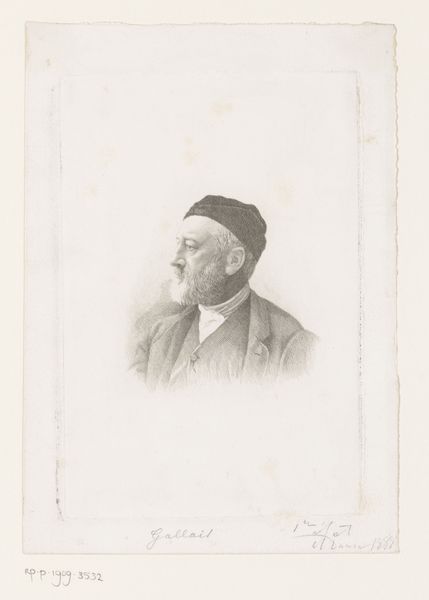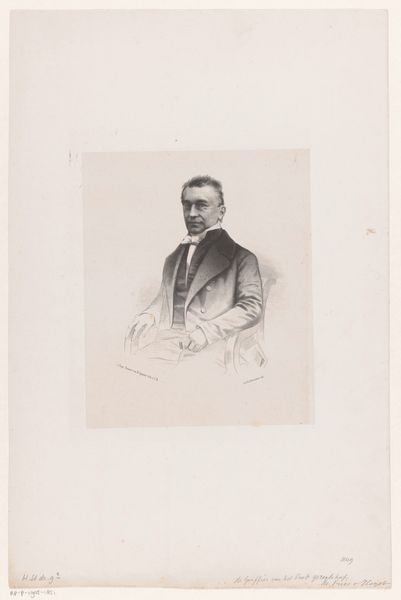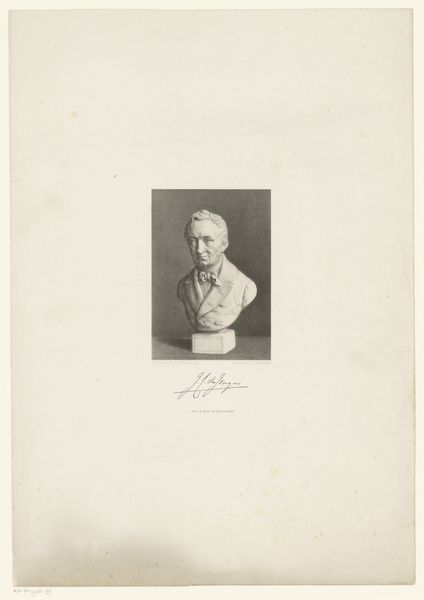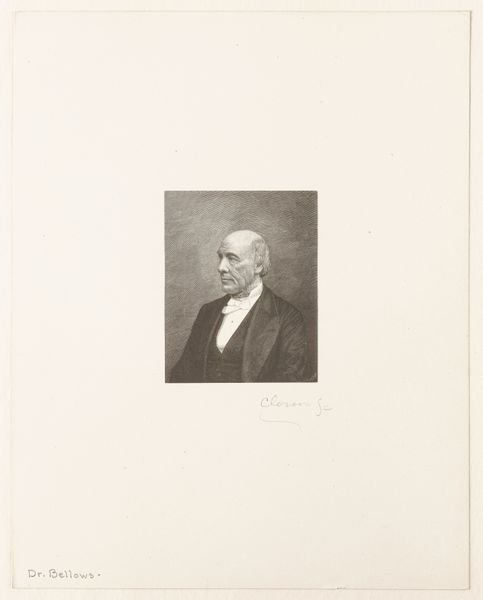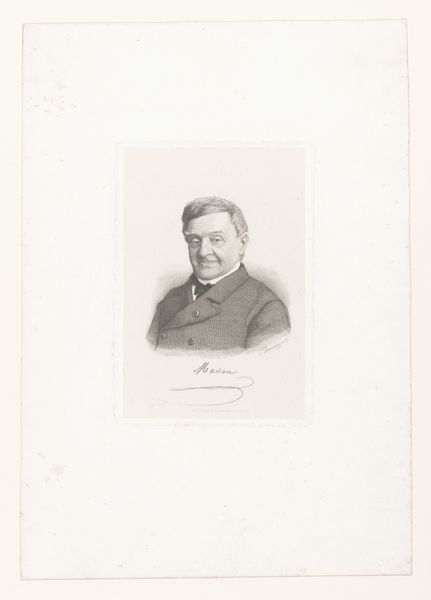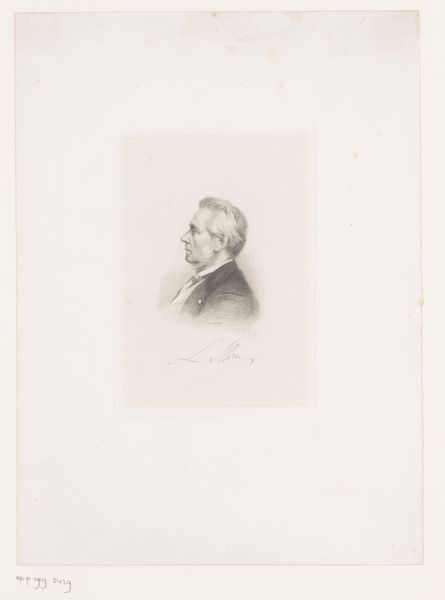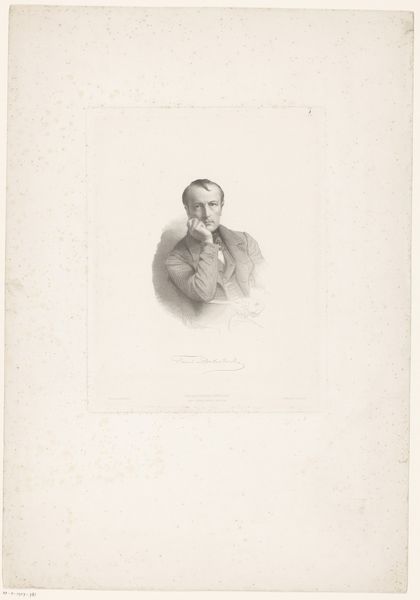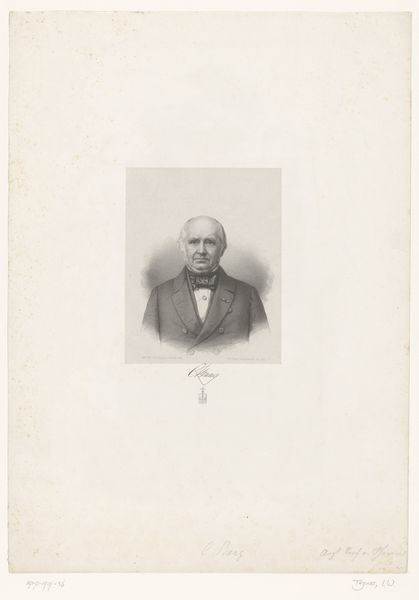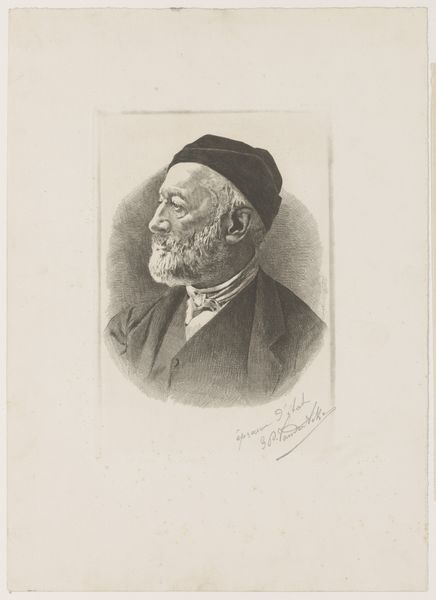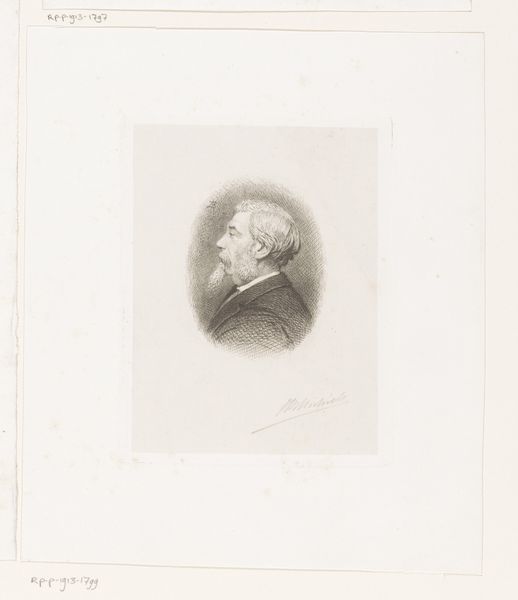
drawing, pencil, graphite
#
portrait
#
drawing
#
pencil
#
graphite
#
academic-art
Dimensions: height 188 mm, width 129 mm
Copyright: Rijks Museum: Open Domain
Curator: Looking at this graphite and pencil drawing, created in 1888 by Auguste Danse, one immediately notes its exquisite detail. The artwork, entitled “Portret van Louis Gallait,” is held here at the Rijksmuseum. Editor: My initial reaction is to the subject’s rather severe expression. There's a weariness in his eyes and a slight downward turn to his mouth that hints at something beyond the image, something melancholy perhaps. The materials lend a delicacy to the sitter which juxtaposes starkly with the subject's intense gaze. Curator: Well, let's consider the historical context. Louis Gallait was a well-regarded Belgian painter of historical scenes, deeply embedded in the academic art scene. This drawing, likely a study or preparatory sketch, speaks to the 19th-century artistic practice of rigorous training and detailed observation of historical portraiture conventions, from presentation to production value. The drawing's existence relies entirely on paper and access to pencils of various types which in and of itself tells a story of an increased demand and accessibility for consumer level artistic expression at this time. Editor: And yet, doesn't the stark contrast between the smoothly rendered face and the more hastily sketched clothing create a sense of incompleteness, of labor perhaps, underscoring how the artist chose to value particular details and social mores when creating the likeness. Curator: Indeed. The materiality reinforces the social value system; his face, the part that will carry his name, receives the most attention and focus while his clothing remains just a support system and structure. It serves to legitimize his presence and contributions in his milieu, through representing the way someone like Gallait chose to have their identity perpetuated, at least in visual culture. Editor: I see it slightly differently. Perhaps this incompleteness offers a vulnerability, cracking open a window into the man beneath the artistic celebrity. It becomes a very human picture then. Curator: I think there’s truth to both. Regardless, analyzing its art historical impact, and taking into account Danse’s drawing and mark making process as its base of production makes me contemplate what legacy is. Editor: Ultimately it makes me ponder the fragility of time, how easily details are forgotten. Thank you for pointing that out!
Comments
No comments
Be the first to comment and join the conversation on the ultimate creative platform.
